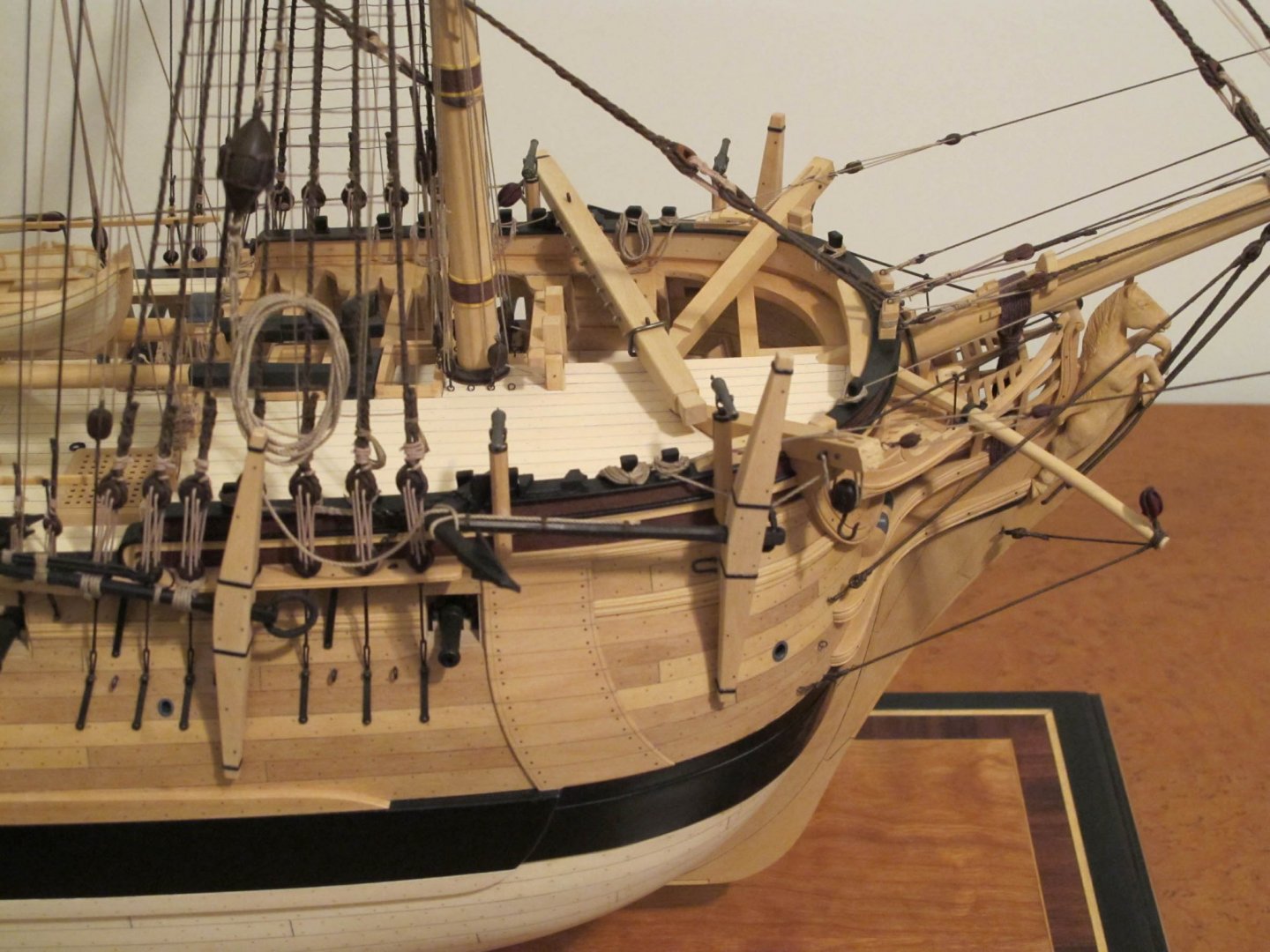-
Posts
13,267 -
Joined
-
Last visited
Content Type
Profiles
Forums
Gallery
Events
Everything posted by druxey
-
I doubt if you'll find any kit of any of those ships. Manufacturers tend only to produce kits of famous ships such as Cutty Sark, Victory, Constitution, etc. I do seem to recall a plastic kit of Captain Nemo's Nautilus. It was made popular by the movie of Jules Verne's 20,000 Leagues Under the Sea. Your approach to ships in fiction is an interesting one. You may find plans of similar vessels on which to base your models, though. Good luck with your research, M. Le Consul!
-

Launch day for the Falmouth Pilot Cutter is coming up soon
druxey replied to Chuck's topic in Nautical/Naval History
Nice project! -
Try to avoid contact type cements. They are instant, but allow no adjustment whatsoever. I'd stick (pun intended!) with PVA (white) or aliphatic (yellow) glues.
-
The storm was recorded on 14th August. Fly was recorded as 'foundered' off Newfoundland in 1802; no specific date given, but 'spring'. So this could not have been the same event.
-
Quick thinking, cool heads and a narrow escape!
-
It was announced some time ago that the owner, Bob Friedmann, has had some significant health issues. This is the most likely reason for delay in deliveries. I hope that he is continuing to recover and that folk will have some patience. He has been a stalwart in supporting the ship modelling and research community as well as his authors for many years.
-
"The model was altered sometime in the 19th century". My suspicions are confirmed! Belaying pins were certainly in use by the 1630's in Sweden. Primary evidence is seen in the headwork of Vasa. See: https://www.google.com/search?q=vasa+head&tbm=isch&ved=2ahUKEwilsfzSv8TnAhUa_qwKHT9qCzYQ2-cCegQIABAA&oq=vasa+head&gs_l=img.12..0i24l2.154814.154814..156960...0.0..0.89.89.1......0....1..gws-wiz-img.eAZ-oODLVXU&ei=lf4_XuWSCJr8swW_1K2wAw&bih=1094&biw=1651#imgrc=aiE6P9-LMhO8hM&imgdii=EReBgpq4OggxJM
-
Looks like you have absolutely the right mind-set and approach to building. Most 'newbies' rush into things. You are thinking ahead and anticipating - exactly the right attitude. You'll do well!
-
15 ½? (One cannon is half in view, upright.) This is an interesting image. Thank you for bringing it to our attention, Bruce.
-
Welcome back, Dana! Depending on the hull form, a bulwark rabbeted into it is one approach. Another might be stanchions inset into the hull sides, then planked in some way.
-
From the RMG Collections site. Unfortunately the image is not available: DIC0047 Description Scale: 1:48. Plan showing the bow, headrails and figurehead for Centaur (1797), a 74-gun Third Rate, two-decker. The colour washed figurehead depicts a full-length centaur rearing up on his hind legs with a raised club in his right hand. A cloak, reminiscent of a horse’s mane, cascades down his back and over his flanks. The trail-board includes a conical quiver of arrows and a bow, surrounded by oak leaves and acorns. Signed by John Marshall [Master Shipwright, Plymouth Dockyard, 1795-1801]. This could be one of a number of proposals for the Centaur’s figurehead as the top left includes the annotation ‘No. 1’. See sketch DIC0080 for unsigned and undated version of this sketch, and sketch DIC0001 for a possible port side version. Date made 1 July 1800
-
'Trumpet' here (post #43) is not the brass instrument, but the man who was a trumpeter! Later (1811) the post of trumpet major was instituted. Thomas Hardy wrote a novel of that name. I had to read that in school and it was deadly dull!
-
Nice simplification, Toni! Gratings look great. Before you do the weather decks, you might want to check the pattern of your butt shifts. (That didn't sound quite right. You know what I meant!)
-
You're getting there, Rob! Won't be long before the launching ceremony....
- 1,208 replies
-
- great republic
- clipper
-
(and 1 more)
Tagged with:
About us
Modelshipworld - Advancing Ship Modeling through Research
SSL Secured
Your security is important for us so this Website is SSL-Secured
NRG Mailing Address
Nautical Research Guild
237 South Lincoln Street
Westmont IL, 60559-1917
Model Ship World ® and the MSW logo are Registered Trademarks, and belong to the Nautical Research Guild (United States Patent and Trademark Office: No. 6,929,264 & No. 6,929,274, registered Dec. 20, 2022)
Helpful Links
About the NRG
If you enjoy building ship models that are historically accurate as well as beautiful, then The Nautical Research Guild (NRG) is just right for you.
The Guild is a non-profit educational organization whose mission is to “Advance Ship Modeling Through Research”. We provide support to our members in their efforts to raise the quality of their model ships.
The Nautical Research Guild has published our world-renowned quarterly magazine, The Nautical Research Journal, since 1955. The pages of the Journal are full of articles by accomplished ship modelers who show you how they create those exquisite details on their models, and by maritime historians who show you the correct details to build. The Journal is available in both print and digital editions. Go to the NRG web site (www.thenrg.org) to download a complimentary digital copy of the Journal. The NRG also publishes plan sets, books and compilations of back issues of the Journal and the former Ships in Scale and Model Ship Builder magazines.



